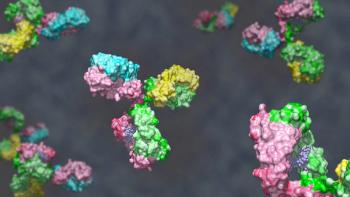
- BioPharm International-09-02-2010
- Volume 2010 Supplement
- Issue 7
IT, Automation, and Process Control
To assess current trends in information technology, automation, and process control, BioPharm International turned to Saroj Patnaik, director of life sciences industry solutions, Emerson Process Management, Mark Drochek, information solutions technical consultant, Rockwell Automation, and Tim Mohn, industry principal, Sparta Systems.
Q: What are the key considerations biopharmaceutical managers should keep in mind when developing an overall strategy for automation?
Patnaik: Biopharmaceutical managers must ensure that plants don't become islands of automation. Biopharmaceutical manufacturing is a unitized floor. The process flows from unit to unit such as bioreactor, filter, harvest, centrifuge, chromatography, etc. The process engineer has a big say in selecting the unit manufacturers. After the project is over, the plant ends with islands of automation, which affects many things including integrity of data, total cost of ownership, and change management. The managers should take a holistic view of the floor during the planning stage.
There are two types of data: molecule-centric and manufacturing-centric. Molecule-centric data carries the fundamentals of science from R&D through fill–finish. In other words, a horizontal flow of data. Manufacturing data flow vertically from ISA S95 level 0 through 4. The process intelligence comes from devices to controller to MES to ERP. In this scenario, the standardization of technology and protocols are critical. For example, managers should identify the type of bus required in level 1 (devices) instead of the type of device manufacturer. This selection requires a holistic view of core business objectives.
Technologies and companies change faster than manufacturing principles. A plant is a multi-decade investment. Managers should look at the obsolescence curves of each technology and develop a philosophy ahead of time so that the supplier is committed to the plant requirement.
Drochek: Biopharmaceutical managers must consider future needs of their facility, both in terms of flexibility to incorporate new products, as well as the information requirements for better analysis of process performance.
Mohn: The most important thing biopharmaceutical managers need to keep in mind about automation is that automation won't help-and may even do more damage-if core manufacturing processes aren't rock solid. It's critical that companies evaluate all their manufacturing and compliance processes to ensure quality before even considering automating these processes.
Q: How important is the role of information technology (IT) in improving process development?
Patnaik: A typical biopharmaceutical floor has 40 to 70 systems such as LIMS, PLCs, barcode scanner, weigh scales, DCS, and MES. Each produces data. At the end, we have a pile of data that becomes a regulatory concern and consumes time to review and understand. Data provide process intelligence. A platform that collects data from all these systems and deciphers patterns and identifies improvement areas would be very good for the floor.
Drochek: Testing at the end of a process will provide a "final grade" for the batch, but understanding how that grade was determined requires analyzing quantitative information for that batch and comparing it to that of other batches. To facilitate such analysis, process data must be collected and stored in an easily accessible format. IT provides more options for data storage and sharing. Business managers and automation and IT engineers must work together to make sure process information is available at the business level while maintaining process security.
Mohn: IT can be vital to improving process development, but shouldn’t be seen as a cure-all. For example, quality management software solutions can be essential in increasing operational efficiencies and ensuring the quality of manufactured products. However, quality management solutions need to reinforce and support a culture of quality across the organization-not the other way around.
Q: What are some of the latest technologies available for real-time process monitoring?
Patnaik: Techniques for batch data alignment continue to evolve and are key to improving online data analytics for fault detection and end of batch quality parameter prediction. Also, web-based interfaces have recently been introduced that allow online data analytics to be accessed by anyone in a manufacturing organization.
Drochek: Process historians have long been the repository of choice for collecting and storing process data. Current web-based visualization tools can now model complex data from multiple sources-historians, databases, and real-time control systems-to enable monitoring and analyzing process data.
Mohn: It's not a new technology per se, but more and more we're seeing companies integrate their manufacturing execution systems with their quality management systems. Doing so can ensure that real-time process monitoring also includes product segregation and issue regulation-simply monitoring processes isn't enough.
Q: What are the biggest challenges companies face when automating bioprocessing operations?
Patnaik: Achieving the challenges described earlier. In a broader context, bringing the following concepts together would be critical to the future of bioprocessing operation: Process analytics: The present manufacturing equation is "variable inputs into a fixed process = fixed output." The FDA has relaxed the equation by encouraging manufacturers to vary their process according to the inputs to achieve the final product quality attributes. The managers should take this into account. Human-centered design: operator interface will be key to efficient manufacturing. Today, human adjusts to technology or machines. Tomorrow, technology will adjust to human behavior. Digitization of quality: Today, quality is paper based, especially the quality assurance. The future is online, real-time quality assurance. Operation managers must think of this trend.
Drochek: The technology to automate bioprocess operations is mature and continues to evolve. The main challenges that companies face are the ability to completely understand the process, evaluate and articulate their need for automation and information, and calculate a return on that investment.
Mohn: The biggest challenge is in making the business case for implementing technologies that may not necessarily demonstrate their benefits in terms of dollar figures. There are a number of IT solutions that will invariably help in minimizing long-term risk to the company, but what if these solutions can’t necessarily be counted on as short-term revenue generators?
Q: What are the common errors that companies typically make when automating bioprocessing or laboratory operations?
Patnaik: Achieving the challenges described earlier. In a broader context, bringing the following concepts together would be critical to the future of bioprocessing operation:
Process analytics: The present manufacturing equation is "variable inputs into a fixed process = fixed output." The FDA has relaxed the equation by encouraging manufacturers to vary their process according to the inputs to achieve the final product quality attributes. The managers should take this into account. Human centered design: operator interface will be key to efficient manufacturing. Today human adjusts to technology or machines. Tomorrow technology will adjust to human behavior.
Digitization of quality: today quality is paper based especially the quality assurance. The future is online, real-time quality assurance. Operation managers must think of this trend.
Drochek: Process control in bioreactors has historically been represented by systems that are focused on controlling the environment of the bioreactor.
Mohn: The most common mistake companies make is to try to automate everything at once. It's very easy for a company to want to just automate all processes at the same time, but history has shown that the amount of training, testing and implementation time required to successfully automate processes make it necessary to deploy these automation tools in a phased approaches.
Q. Has recent industry interest in operational excellence (Lean, Six Sigma) spurred greater interest in automation?
Patnaik: The global trends especially increasing patent expiration, changing disease profiles, and increasing grey factors (>60 year old population) are putting cost pressures on drugs. Companies now have operational excellence groups spanning across the functional groups of the enterprise.
Drochek: There has always been a great interest in automating bioprocess applications. However, increased emphasis on operational excellence has now focused teams on tangible goals of automation, those that tie back business drivers. Companies are conducting more extensive ROI investigations before deciding how much automation will be implemented in a system.
Mohn: Absolutely. Companies are using these methodologies to drive process improvements across the supply chain, including automation. A clear tenet of these strategies is continuous improvement and we see companies consistently prioritizing the changes and adding incremental automations, or improvements of existing automations, to realize true business value.
Q. A few years ago, PAT was a hot topic. What is the current state of PAT implementation across the biotech industry?
Patnaik: It is still a hot topic. Industry seems unable to bring the gap between science and engineering and quality with a regulatory bridge. As this is a regulatory guidance versus a regulation the adaptation is slower but we think it will continue to catch up.
Drochek: It is still a hot topic. Industry seems unable to bring the gap between science and engineering and quality with a regulatory bridge. As this is a regulatory guidance versus a regulation the adaptation is slower but we think it will continue to catch up.
Articles in this issue
over 15 years ago
Single-Use Bioprocessing Equipmentover 15 years ago
Downstream Processingover 15 years ago
Cell Culture Mediaover 15 years ago
Fermentation and Cell Culture Equipmentover 15 years ago
Laboratory Products and Equipmentover 15 years ago
Outsourcingover 15 years ago
BioPharm International, September 2010 Supplement (PDF)Newsletter
Stay at the forefront of biopharmaceutical innovation—subscribe to BioPharm International for expert insights on drug development, manufacturing, compliance, and more.




